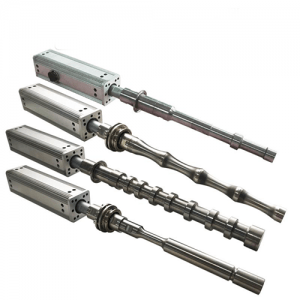Ultrasonic plays an important role in all walks of life. In the biological production, an ultrasonic cell grinder is a common method used for crushing and grinding cells. With the development of biological industry, an ultrasonic cell grinder has improved its intelligence degree over the last few years. It can measure and control temperature of samples better as well as cool samples at a low temperature more accurately. The following parts will give an specific introduction to an ultrasonic cell grinder.
Introduction to Ultrasonic Cell Grinder

An ultrasonic cell grinder is a multifunctional and multi-purpose instrument by ultrasonic by utilizing strong ultrasonic to generate cavitation effect. It can not only be used for crushing tissues of animal and plant, bacteria and germ strains, but used for emulsifying, separating, dispersing, homogenizing, extraction, degassing, cleaning and accelerating chemical reactions. It is regarded as an ideal equipment for preparing and dispersing nano materials.
Working Principle of Ultrasonic Cell Grinder
An ultrasonic cell grinder is generally composed of an ultrasonic generator and a transducer. By utilizing the dispersion effect of ultrasonic in liquid, the liquid can generate the cavitation effect so that solid particles and cell tissues in liquid can be crushed. Specifically speaking, the ultrasonic generator converts the electric supply into the alternating power of 18-21KHz to supply the transducer. The barium zirconate titanate piezoelectric vibrator serves as the heart of the transducer. With the alternating voltage, it makes elastic deformation at the frequency of 18-21KHz, and the transducer vibrates longitudinally mechanically. The vibration wave produces the cavitation effect through the titanium alloy beam immersed in the biological solution, which motivates the biological particles in the medium to vibrate violently.
What is an Ultrasonic Cell Grinder Used for?
As we mentioned above, an ultrasonic cell can achieve a great variety of purposes. It is widely used for teaching, scientific research and production in biochemistry, microbiology, pharmaceutical chemistry, surface chemistry, physics, zoology, agricultural, medicine, pharmaceutical and other fields. For example: It can be used for crushing cells and tissues of animal and plant, bacteria, or tooth spore. And it can also disperse rare earth and various inorganic mineral powder. It is an ideal device for accelerating the reaction speed of chemistry, biology and physics and the degassing of liquid. It can prepare tiny latex that is nearly one-hundredth of micro. It can homogenize the immiscible mixture, fold some things together and separate out others. It can realize extraction, crushing, emulsification, homogenization and the preparation of various biological samples under an electron microscope.
[title text=”Related Products” tag_name=”h2″ color=”rgb(119, 199, 239)”]
[title text=”Related Posts” tag_name=”h2″ color=”rgb(119, 199, 239)”]
[blog_posts style=”vertical” columns=”2″ columns__md=”1″ depth=”2″ slider_nav_style=”simple” slider_nav_position=”outside” ids=”24949,24954″ image_height=”89%” image_width=”43″]
